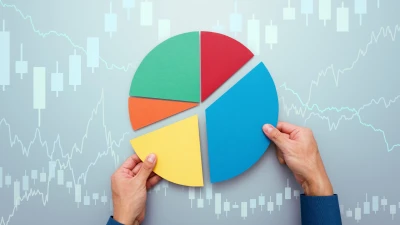Where to for Aussie small caps in 2023?



This year has not been a good one for small caps. There are a number of reasons for what has been the worst period of relative underperformance by small caps since the Global Financial Crisis (GFC).
It will also set the scene for our expectation of a reversal in 2023.
The overwhelming influence on equity markets, and especially smaller companies in 2022 has been the global pattern of interest rate rises by central banks to curb inflation. This led bond yields to rise, money supply to tighten, and in the back half of the year, economic growth in virtually all economies to slow. The Russian invasion of Ukraine amplified these factors with the resultant surge in energy prices.
The impact within equity markets has also been significant. Rising yields impact the discount rate used to value securities, particularly ‘long-dated’ growth sectors. Falling liquidity impacts the ability of smaller companies (often unprofitable) to raise equity capital and higher interest rates negatively impact the attraction of sectors such as property trusts. And lastly, the spectre of slower economic growth and higher living costs, meant consumer-facing companies such as discretionary retailers also
came under pressure. The Small Ords has a much greater population of these sectors than the Top 100.
What has also been a feature is the de-rating of many smaller companies despite continuing to exhibit good earnings growth. This is most likely due to liquidity leaving the smaller end of the equity market through the year.
The year is finishing with a little more confidence and we expect that to grow – not in a straight line but over the course of the next year.
Recognising how fraught it is to make macroeconomic forecasts, we’ll make limited observations on the impact of such forecasts on 2023. We are reminded of John Kenneth Galbraith, who mentioned that there are two kinds of forecasters: ‘Those who don’t know, and those who don’t know they don’t know’.
As a side note, our approach to managing a portfolio of Australian small companies, especially since the onset of COVID-19, has been very deliberately not to have big sectoral or thematic positions. This also seems prudent going into 2023 as economic outcomes remain unclear.
Interest rates and the outlook for a recession in Australia
The consensus view that the pace of interest rate increases slows in 2023 seems reasonable. The inflation rate is arguably near a peak (7-8%), and several economic indicators are showing weakness:
Domestic growth has been slowing, house prices have fallen, homeowners are paying more on their mortgages, retail sales fell for the first time in October 2022, and consumer confidence is down ~25% yoy.
While much of the Western World including the US and Europe is more likely than not to go into recession next year, our view is that Australia is likely to avoid a recession. The starting point for unemployment is a very strong 3.4%, and balance sheets are very healthy, which should allow for the consumer to keep spending.
Furthermore, Australia as a resource rich nation continues to benefit through the export of commodities including iron ore, coal, gas, metals such as copper and gold, as well as soft commodities like wheat and livestock. Australia’s exports contribute meaningfully to GDP, at over 22% of GDP currently.
Finally, the potential for China to reopen next year as it inevitably moves away from its disastrous zero-COVID policy would likely benefit Australia as well (given its resources exposure). With China’s lockdown as severe and as protracted as it has been, it could be costly to underestimate its rebound.
Which small cap sectors are positioned well?
Given the economic slowdown expected in 2023, we’d expect sectors exposed to the consumer and other domestic cyclical sectors to have headwinds to their earnings.
While our portfolio is underweight sectors like retail where earnings have downside risk, the caveat is valuation, as many of these stocks have already sold off in 2022. Opportunities have and will be coming up in this part of the market.
The impact of cost and inflationary pressures such as freight and logistics, staffing and energy should moderate in 2023 and businesses that have genuine pricing power are relatively well positioned, as their earnings should be less susceptible to a negative impact.
Our focus in this slowing growth environment has been to hold companies that are demonstrating growth (regardless of their industry). As a general rule, when growth is scarce, investors pay a premium for growth (and these stocks can subsequently perform well).
Being able to buy growing names at a reasonable or cheap valuation provides a margin of safety. The good news is, given the weak equity markets experienced in 2022, we are seeing opportunities across a number of sectors – many of our holdings are trading at a discount to the market, and are expected to have good earnings growth over the next couple of years at least.
Most also have a business model where margins should be protected in a weaker environment.
If there was one sector that we’d call, it’s the resources sector. This may not seem intuitive in the face of slowing global growth. However, there are several factors in its favour. Over the shorter term, a peak in the US dollar (given peaking inflation and consequently rate hikes), as well as the likely reopening of China are very favourable.
The Russia/Ukraine War continues to cause severe disruption on the supply side to many commodities. Over the longer term, decarbonisation is a major theme that will be around for decades, which will draw on substantial demand for commodities.
Despite the overall view of a slowing economy, it’s important to stress that pockets of opportunity exist. And markets are forward looking. We are finding opportunities to invest in companies demonstrating double digit earnings growth, that are well capitalised with good management, priced at a discount to the market. Small caps have de-rated significantly and that will reverse quickly if business conditions start to show early signs of improvement.
Naheed Rahman is deputy portfolio manager at Flinders Investment Partners.
Recommended for you
As fixed income markets evolve, advisers are questioning how to deliver consistent income, manage downside risk, and diversify exposures, all while navigating an uncertain interest rate environment
With the end of financial year fast approaching, this may be an optimal time to start a discussion with families about future succession planning, writes Peter Leggett.
Recent developments in talks between the US and China to develop a trade framework has boosted investor interest in emerging markets (EMs).
A lawyer has shared how financial advisers can collaboratively work with law firms to successfully protect their clients' assets in the case of a family dispute.













